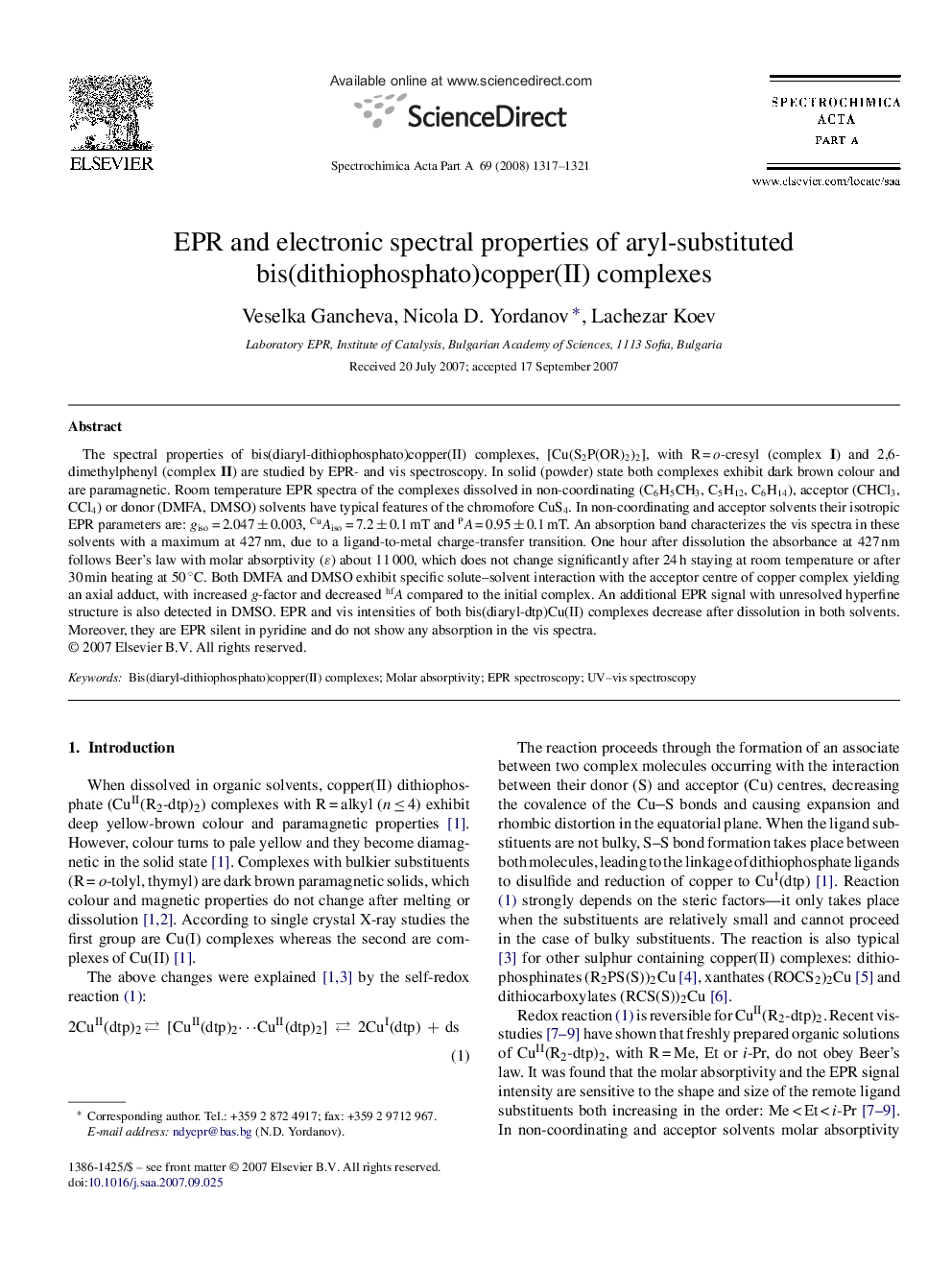| Article ID | Journal | Published Year | Pages | File Type |
|---|---|---|---|---|
| 1238230 | Spectrochimica Acta Part A: Molecular and Biomolecular Spectroscopy | 2008 | 5 Pages |
The spectral properties of bis(diaryl-dithiophosphato)copper(II) complexes, [Cu(S2P(OR)2)2], with R = o-cresyl (complex I) and 2,6-dimethylphenyl (complex II) are studied by EPR- and vis spectroscopy. In solid (powder) state both complexes exhibit dark brown colour and are paramagnetic. Room temperature EPR spectra of the complexes dissolved in non-coordinating (C6H5CH3, C5H12, C6H14), acceptor (CHCl3, CCl4) or donor (DMFA, DMSO) solvents have typical features of the chromofore CuS4. In non-coordinating and acceptor solvents their isotropic EPR parameters are: giso = 2.047 ± 0.003, CuAiso = 7.2 ± 0.1 mT and PA = 0.95 ± 0.1 mT. An absorption band characterizes the vis spectra in these solvents with a maximum at 427 nm, due to a ligand-to-metal charge-transfer transition. One hour after dissolution the absorbance at 427 nm follows Beer's law with molar absorptivity (ɛ) about 11 000, which does not change significantly after 24 h staying at room temperature or after 30 min heating at 50 °C. Both DMFA and DMSO exhibit specific solute–solvent interaction with the acceptor centre of copper complex yielding an axial adduct, with increased g-factor and decreased hfA compared to the initial complex. An additional EPR signal with unresolved hyperfine structure is also detected in DMSO. EPR and vis intensities of both bis(diaryl-dtp)Cu(II) complexes decrease after dissolution in both solvents. Moreover, they are EPR silent in pyridine and do not show any absorption in the vis spectra.
